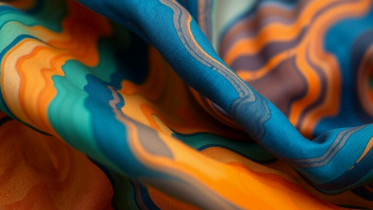
Reactive Dyes for Cotton: Your Guide to High-Quality, Eco-Friendly Options
The textile industry thrives on color, and reactive dyes for cotton offer a vibrant and long-lasting solution. With their ability to bond chemically with fabric, these dyes produce stunning hues that withstand washing and fading. This article will guide you through the world of reactive dyes, their benefits, and how to choose the best options for your needs.The Vibrancy and Durability of Reactive Dyes
The Vibrancy and Durability of Reactive Dyes
The Allure of Colorfast Cotton
Colorfastness is crucial for anyone looking to produce durable textile products. Reactive dyes create a bond at the molecular level, ensuring that colors remain bright even after multiple washes. This property makes them ideal for high-quality cotton fabrics, such as clothing, home textiles, and more.
Reactive Dye Technology: A Deep Dive
Reactive dyes contain reactive groups that form covalent bonds with cellulose fibers in cotton. This chemical reaction results in dyes that are more stable than those applied through other methods. Cotton dyed with reactive dyes is resistant not just to washing, but also to light, resulting in enduring color vibrancy.
Why Choose Reactive Dyes for Cotton?
- Long-lasting Colors: Reactive dyes create vibrant, lasting shades.
- Versatility: They can be used on various cotton blends.
- Wide Color Range: There is a vast spectrum of shades available.
- Eco-Friendly Options: Many manufacturers now provide sustainable alternatives.
Understanding Reactive Dye Chemistry and Application
The Science Behind Reactive Dye Bonding
The bonding mechanism involves nucleophilic substitution, where the dye reacts with hydroxyl groups in cotton. This results in a strong chemical bond that enhances color durability. Understanding this process is key for achieving high-quality dye results.
Achieving Optimal Dye Fixation: Process Parameters
- Temperature: Higher temperatures often improve dye absorption.
- pH Level: Maintaining an acidic to neutral pH is generally recommended.
- Time: Longer dyeing times can enhance color depth.
Common Reactive Dye Classes and Their Properties
- Mono-Reactive Dyes: Simple structure, offer broad application but less colorfastness.
- Di-Reactive Dyes: More complex, providing greater color stability and depth.
- Hot Brand Dyes: Ideal for high-temperature dyeing; great for cotton blends.
Selecting the Right Reactive Dye for Your Needs

Color Selection and Matching
Different applications require different colors. Use color matching systems and samples to ensure your chosen shade meets your requirements. This process helps avoid costly mistakes and ensures customer satisfaction.
Considering Fabric Properties and Dye Compatibility
Not all dyes work well with every fabric. Assess the fabric type, blend, and any finishes before selecting a dye. Cotton products benefit most from reactive dyes due to their chemical bonding nature.
Evaluating Lightfastness, Washfastness, and Rubfastness
These fastness properties indicate how well a dye resists fading, washing, and rubbing off. Always review these metrics, especially if the textiles will undergo frequent use or exposure to light.
Eco-Friendly Reactive Dyes: Sustainability in Textile Production

Minimizing Environmental Impact: Green Chemistry Approaches
Manufacturers are increasingly adopting sustainable practices. Eco-friendly reactive dyes use less water and generate fewer pollutants compared to traditional dyes. Choose suppliers focused on green chemistry to minimize environmental impact.
Choosing Sustainable Reactive Dye Suppliers
Seek out suppliers committed to sustainability Look for:
- Certifications in eco-friendly production
- Clear commitments to waste reduction
- Use of non-toxic substances in dye formulations
Certifications and Standards for Eco-Friendly Dyes
Certifications such as GOTS (Global Organic Textile Standard) and OEKO-TEX® Standard 100 ensure dyes are safe and environmentally friendly. These labels provide assurance of quality for both consumers and manufacturers.
Sourcing High-Quality Reactive Dyes: Manufacturers and Exporters
Finding Reliable Reactive Dye Manufacturers

When sourcing dyes, concentrate on finding manufacturers with a solid reputation. Research potential suppliers by checking:
- Customer reviews and testimonials
- Sample products and their quality
- Certifications and compliance with safety standards
Evaluating Supplier Capabilities and Certifications
Make sure potential suppliers can meet your production needs. Consider their:
- Production capacity
- R&D capabilities
- Range of dye products offered
Navigating Wholesale Reactive Dye Markets
Wholesale markets can offer cost-effective options. However, always ensure you’re dealing with reputable exporters. Verify their quality control processes and inquire about bulk pricing and shipping conditions.
Conclusion: Making Informed Decisions for Vibrant, Sustainable Textiles
Key Takeaways: Choosing the Right Reactive Dyes
- Prioritize quality and sustainability.
- Understand the chemistry behind dye bonding.
- Evaluate supplier capabilities before making a commitment.
Future Trends in Reactive Dye Technology
Look for developments in bio-based dyes and advances in dyeing technologies. Innovations in this field will continue to enhance the color vibrancy and sustainability of textile production.
Actionable Steps for Textile Businesses
- Research and choose the right reactive dyes.
- Focus on eco-friendly options to meet consumer preferences.
- Collaborate with reliable suppliers to ensure quality and consistency.
Embracing reactive dyes for cotton textiles provides not just aesthetic appeal, but also durability and sustainability. Make informed choices to elevate your textile offerings.
Posted by : Shweta | 22 July, 2025
